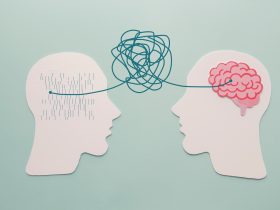It’s a familiar story: in our fast-paced world, time seems to slip away, leaving us juggling work, relationships, and self-care. Our desire to do more, to keep up, can lead to burnout. But there’s a way to optimize our routines, to feel like there are more hours in the day, without succumbing to exhaustion.
How? It’s all about taking a functional medicine approach.
Functional medicine is a holistic approach that focuses on the root cause of health problems rather than just treating symptoms. It’s about optimizing your body’s natural processes to achieve optimal health.
While there’s no magic formula for adding more hours to the day, incorporating a functional medicine approach into your routine can help you feel more energized and focused, giving you the ability to accomplish more in less time.
It’s all about optimizing your body’s natural processes, so you can achieve optimal health and productivity.
What is Burnout?
Burnout isn’t just feeling tired or stressed out. It’s a complex condition that affects your physical, mental, and emotional well-being. Burnout is closely tied to the body’s HPA-axis, or hypothalamic-pituitary-adrenal axis, which regulates stress response.
HPA-axis Dysregulation
When you’re stressed or overworked for a long period of time, your HPA-axis can become dysregulated. This means your body’s stress response system isn’t working as it should, leading to an ongoing release of stress hormones like cortisol and adrenaline.
This constant stream of hormones can wreak havoc on your body, leading to a range of symptoms associated with burnout.
Physical Symptoms
The physical symptoms of burnout can include:
- Trouble Sleeping: Difficulty falling asleep or staying asleep through the night.
- Headaches: Frequent or severe headaches, especially tension headaches.
- Digestive Problems: Experiencing stomach aches, nausea, or other digestive issues.
- Weak Immunity: Getting sick often or taking a long time to recover from illness.
- Fatigue: Feeling tired all the time, even after a good night’s sleep.
- Muscle Pain: Feeling achy or sore, especially in the neck, shoulders, and back.
Mental and Emotional Symptoms
The mental and emotional symptoms of burnout may include but are not limited to:
- Anxiety: Feeling nervous, worried, or on edge.
- Overwhelm: Feeling like you have too much to do and not enough time to do it.
- Emotional Exhaustion: Feeling emotionally drained or numb.
- Cynicism: Feeling disconnected or apathetic towards your work, relationships, or other aspects of your life.
- Depression: Feeling sad, hopeless, or irritable for no apparent reason.
- Lack of Motivation: Having trouble finding the energy or desire to do things you used to enjoy.
Crafting Your Anti-Burnout Routine: How to Reclaim Your Time and Well-being
Are you feeling overwhelmed by the daily grind and longing for more hours in the day? It’s time to reclaim your health and recharge your energy with this simple yet effective anti-burnout routine.
Designed to address both the physical and emotional aspects of burnout, this routine can help you regain control of your time without adding extra stress to your to-do list.
Morning: Setting the Tone for a Productive Day
- Wake up with Natural Light Exposure: Start your day by syncing your internal clock with the rising sun. If you can’t step outside, consider investing in a dawn simulator or sunrise alarm clock.
These devices mimic the natural sunrise, gently waking you up and helping to reset your circadian rhythm. This not only promotes better sleep quality but also enhances your energy levels and overall well-being.
- Opt for a Nutrient-Dense Breakfast: Say goodbye to quick fixes like coffee and pastries, and opt for a breakfast that fuels your body and brain. Consider a protein-rich frittata topped with avocado – a delicious and nutritious option that can be prepared in advance and reheated when needed.
Unlike simple carbs that provide a temporary energy boost, this balanced breakfast provides sustained energy and supports optimal brain function, helping you stay sharp and focused throughout the day.
- Prioritize Your Tasks: Take a few moments to prioritize your tasks for the day. Identify the most important or challenging tasks and tackle them during your peak energy periods, typically in the morning for many individuals.
By scheduling your tasks strategically, you can maximize your productivity and feel a sense of accomplishment early in the day.
- Practice Mindfulness or Meditation: Dedicate a few minutes each morning to mindfulness or meditation. This simple practice can help you center yourself in the present moment, cultivate a positive mindset, and reduce stress.
As you start your day with a calm and focused mind, you’ll be better equipped to handle the challenges that come your way.
Midday: Overcoming the Afternoon Slump
Feeling a dip in energy during the afternoon is common, especially for those dealing with burnout and adrenal fatigue.
Here are some tips to help you combat the afternoon slump and regain your focus and energy.
- Utilize Strategic Work-Break Cycles: The Pomodoro Technique is a popular method for maintaining focus and productivity. It involves working for a set period (usually around 25 minutes) and then taking a short break before beginning another work period.
This structured approach can help you stay focused and avoid the burnout that comes from working long stretches without breaks.
- Incorporate Physical Activity: Taking a brief break to engage in physical activity can be a great way to boost energy levels and mood.
Whether it’s a yoga session or a brisk walk during your lunch break, moving your body can help reset your mindset and prepare you for a productive afternoon.
Plus, physical activity can increase the production of neurotransmitters like dopamine, which can enhance your mood and motivation.
- Mindful Caffeine Consumption: While reaching for another cup of coffee might seem like a quick fix, it can actually worsen adrenal fatigue and disrupt sleep patterns. Instead, consider snacking on foods rich in healthy fats, like homemade fat bombs or a handful of mixed nuts.
These snacks can curb sweet cravings and provide a steady source of energy without the crash that comes from caffeine.
Remember, everyone’s body and needs are different, so listen to your body and adjust these strategies to suit your individual preferences and limitations.
By being mindful of your caffeine intake, utilizing work-break cycles, and incorporating physical activity, you can overcome the afternoon slump and reclaim your productivity.
Transitioning into Your Evening Routine for a Restful Night’s Sleep
As the day draws to a close, it’s important to focus on relaxation and sleep to break the cycle of stress and promote overall well-being. Here are some simple steps to help you unwind and prepare for a restful night’s sleep:
- Supplement Support: Certain supplements can aid in addressing the physiological causes of burnout and promote better sleep.
Magnesium is particularly effective in this regard, as it supports the activity of GABA receptors, which play a crucial role in regulating the body’s sleep-wake cycle.
- Practicing Gratitude: Reflecting on the positive aspects of your day can help shift your focus away from stress and anxiety. At the end of each day, take a moment to list one to three things that you’re grateful for.
This simple practice can have a calming effect on your mind and promote a sense of well-being.
- Say Goodbye to Technology: Blue light from electronic devices can disrupt your body’s natural production of melatonin, the hormone that regulates sleep.
To promote healthy sleep patterns, limit your screen time in the evening. If you can’t avoid using electronic devices entirely, consider wearing amber-colored glasses, which can help reduce the negative effects of blue light exposure.
Incorporating these steps into your evening routine can help you wind down, promote relaxation, and set the stage for a peaceful night’s sleep.
Addressing the Root Causes of Burnout
While incorporating lifestyle changes and healthy habits is essential for managing burnout, addressing the underlying dysfunctions that contribute to chronic stress is equally important. Here are a few key tests experts recommend:
- Inflammation Markers: Chronic stress can lead to systemic inflammation, which is linked to a range of health issues, including cardiovascular disease, autoimmune disorders, and mental health conditions.
Tests like C-Reactive Protein (CRP), homocysteine, and ferritin can help assess levels of inflammation in the body.
- Blood Sugar Tests: Dysregulated blood sugar levels are common in individuals experiencing burnout and chronic stress.
Tests such as serum insulin, c-peptide, fasting blood sugar, and HgbA1c can provide insight into how the body is processing glucose and whether there are signs of insulin resistance or blood sugar imbalances.
- 24-Hour Adrenal Stress Index (ASI) Test: This test provides a comprehensive look at cortisol levels throughout the day, offering valuable insights into how the body’s stress response system is functioning.
It can reveal patterns of cortisol imbalance that may be contributing to fatigue, insomnia, and other symptoms of burnout.
By conducting these tests and gaining a deeper understanding of how stress impacts the body on a biochemical level, doctors can tailor treatment plans to address specific imbalances and support the body’s natural rhythms.
This holistic approach not only helps manage the physical and mental symptoms of burnout but also promotes long-term health and resilience.
The Takeaway: A Comprehensive Approach to Overcoming Burnout
Managing burnout requires more than just implementing lifestyle changes. By addressing the underlying dysfunctions that contribute to chronic stress and fatigue, you and your physician can create targeted treatment plans that support overall health and well-being.
This comprehensive approach can help individuals feel more productive, mentally resilient, and accomplished, without the need for more hours in the day.















Find Us on Socials